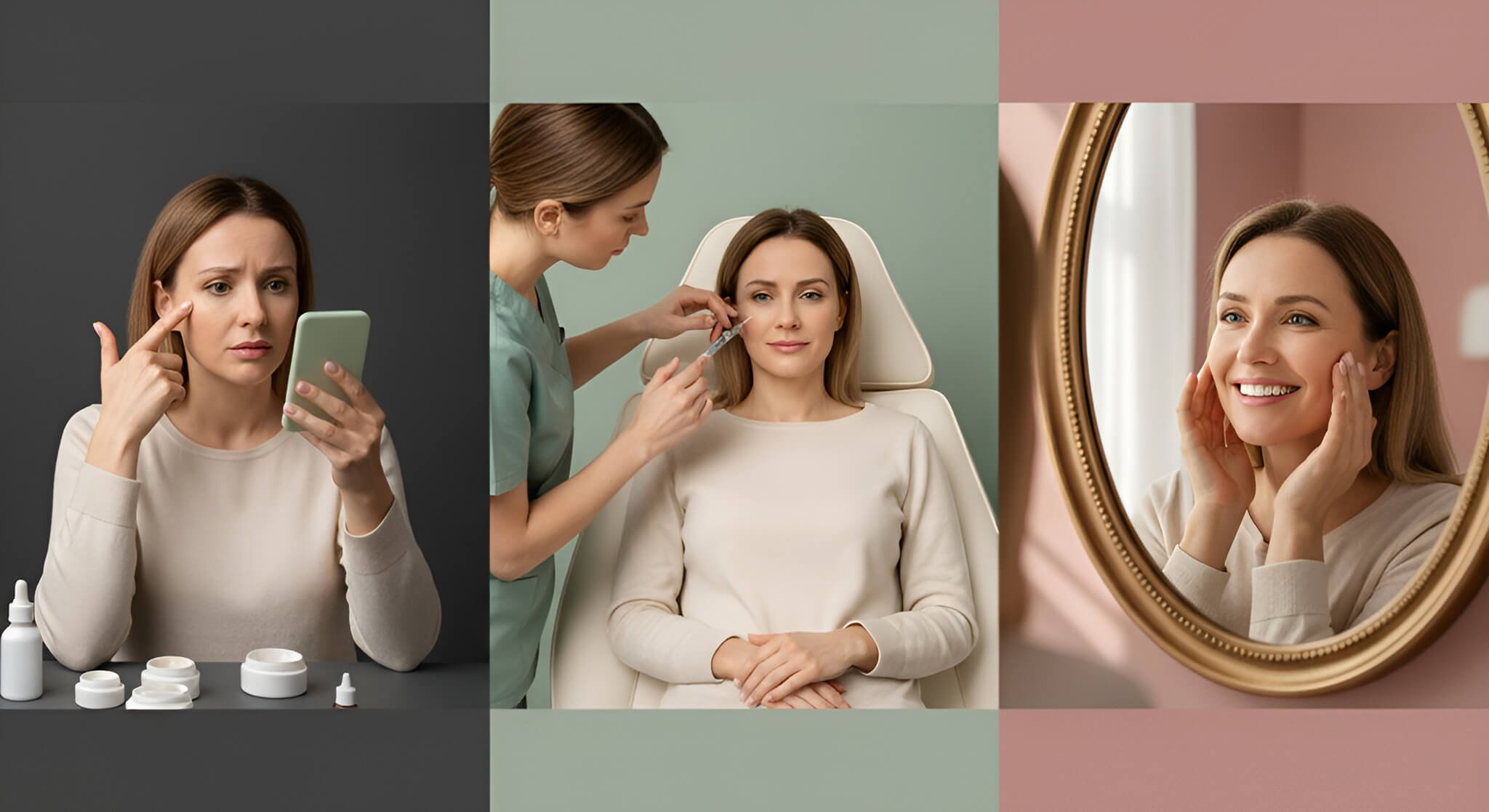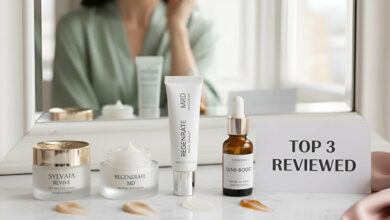Are Under-Eye Fillers the Only Permanent Solution for Hollowness and Dark Circles?
Table of contents
The Quest to Erase “Tired Eyes” for Good
You get a full eight hours of deep sleep, you stay hydrated, and you manage your stress, yet you still look in the mirror and see persistent shadows and hollows under your eyes. These stubborn dark circles & puffiness can be genetic and are notoriously difficult to treat with creams alone, making you look tired even when you feel fully rested. This frustration has made under-eye fillers one of the most popular non-invasive cosmetic procedures in the world.
But is this injectable treatment a magic bullet for everyone? And more importantly, is it the only truly effective, long-term solution for looking less tired?
The answer is a definitive no. To understand the best solution for you, you must first correctly diagnose the cause of your dark circles. We’re breaking down the science of what causes them, how fillers work, and the powerful alternatives you should know about.
This quest to look “less tired” is a universal one. While fillers are a powerful tool for the under-eye area, they are just one part of a complete guide to looking less tired and achieving brighter skin.
The Diagnosis: Not All Dark Circles Are Created Equal
Before seeking a solution, you must identify your primary problem. Most dark circles fall into one of three categories.
Type 1: Hollowness (A Volume Problem)
As we age, we naturally lose fat and collagen in the face. This volume loss can create a concave area under the eye known as a “tear trough.” This hollow casts a physical shadow that we perceive as a dark circle. If your dark circles disappear when you are in bright, overhead lighting, they are likely caused by shadow and hollowness.
Type 2: Pigmentation (A Color Problem)
This is a true color issue within the skin itself. Genetics (especially in deeper skin tones), chronic rubbing, and sun exposure can cause an actual overproduction of brown pigment (melanin) in the skin under the eyes, making it visibly darker than the surrounding skin.
Type 3: Thin Skin (A Transparency Problem)
The skin under our eyes is the thinnest on the entire body. This delicate skin can become even thinner with age. This transparency allows the purple and blue hues of the underlying blood vessels and orbicularis oculi muscle to show through, creating a dark, vascular appearance.
The Filler Solution: How It Works and What It Can (and Can’t) Fix
How It Works
A board-certified dermatologist or plastic surgeon injects a smooth, gel-like filler made of Hyaluronic Acid into the tear trough area. This gel physically adds back volume where it has been lost, lifting the skin and smoothing the transition between the under-eye and the cheek.
What It’s Excellent For
Dark circles caused by hollowness and shadow. By filling the trough, the shadow that was causing the dark circle is eliminated. The area looks instantly brighter, plumper, and smoother. For the right candidate, the results are immediate and dramatic.
What It Cannot Fix
Dark circles caused by pigmentation. Filler adds volume; it does not change the color of the skin itself. If your dark circles are brown and pigment-based, filler will have little to no effect. It also does not significantly change the appearance of blue/purple circles caused by thin skin.
Powerful Alternatives to Filler
If your issue isn’t primarily volume loss, other treatments are far more effective.
For Pigmentation (Brown Circles): Topical Brighteners
A dedicated eye cream or serum is the most effective at-home approach. Look for powerhouse brightening ingredients like Vitamin C (to inhibit pigment production), Retinol (to increase cell turnover and shed pigmented cells), and Niacinamide.
For Thin Skin (Blue/Purple Circles): Collagen-Boosting Treatments
The goal here is to thicken and strengthen the skin over time.
- At-Home: Topical ingredients like Retinol and Peptides are proven to help stimulate your skin’s own collagen production.
- In-Office: Professional treatments like Microneedling and certain types of Laser Therapy are very effective at building new collagen in the under-eye area.
For Mild Hollowness: A Great Concealer
Never underestimate the power of makeup. For mild shadowing, a light-reflecting, peachy-toned Concealer can instantly neutralize dark shadows and create the illusion of a fuller, brighter under-eye without needles.
The At-a-Glance Comparison Table
| Treatment | Best For | Results Timeline | Cost | Longevity |
| Under-Eye Filler | Hollowness / Shadows | Instant | High | Long-Term (12-18 mos) |
| Topical Creams | Pigmentation, Thin Skin | Slow (3+ months) | Low-Medium | Continuous Use Required |
| Laser/Microneedling | Thin Skin, Texture | Medium (Weeks-Months) | High | Very Long-Term |
| Concealer | Mild Hollowness / Shadows | Instant | Low | Daily / Temporary |
The Verdict: A Targeted Solution, Not a Universal Cure
So, are under-eye fillers the only effective, long-term solution for dark circles? No. Firstly, they are not truly permanent, as the body naturally metabolizes the filler over time. Secondly, and most importantly, they are only a solution for one specific cause of dark circles: volume loss.
The most effective strategy for rejuvenation begins with a proper diagnosis of the cause of your dark circles. By identifying your specific issue, you can choose the right tool for the job. An expert consultation with a board-certified dermatologist is the best first step to creating a personalized plan for brighter, more rested-looking eyes.






